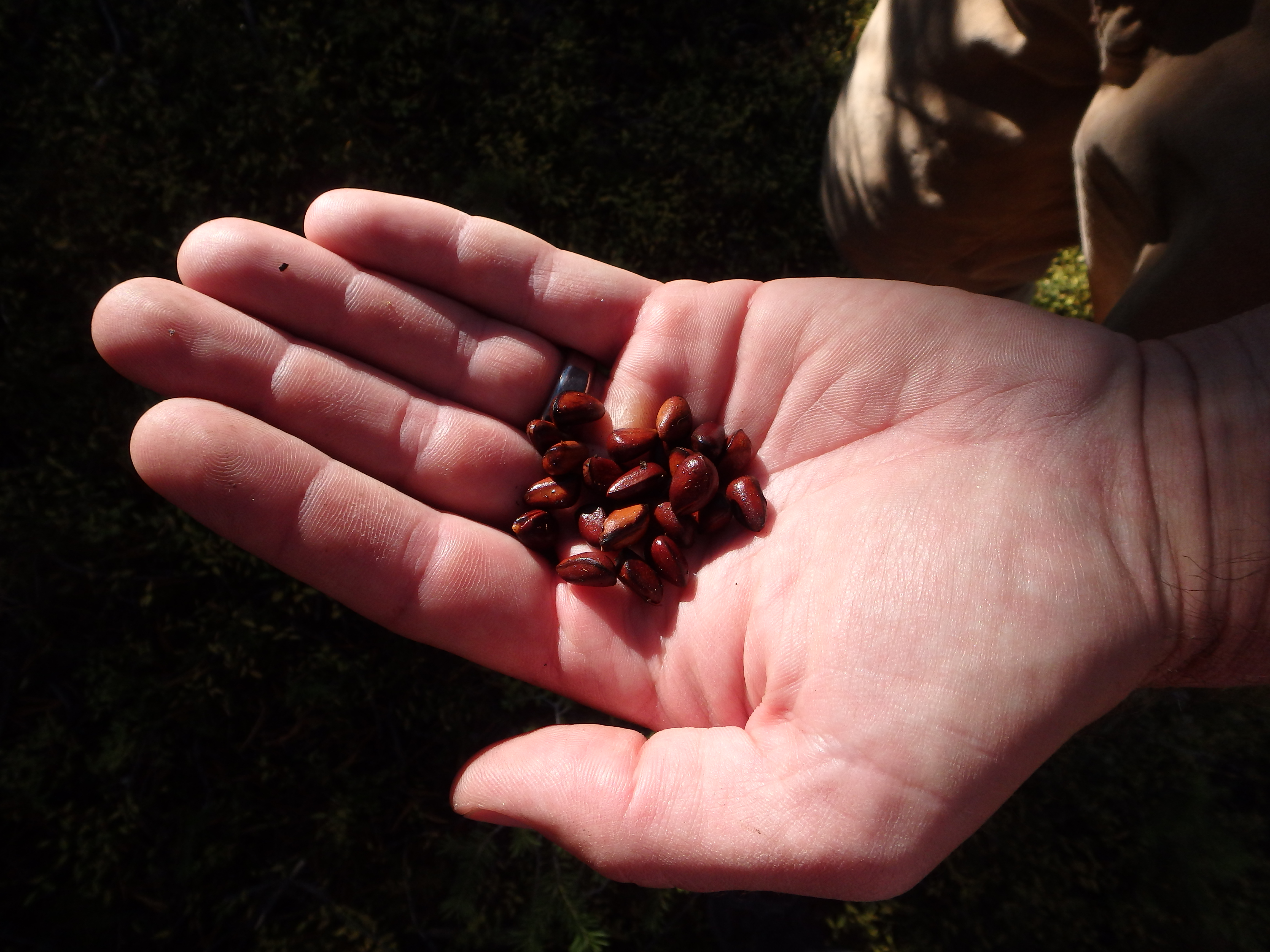By Amy Gannon, Entomologist, Montana DNRC Forestry Division
Whitebark pine in the Greater Yellowstone Area (GYA) has been severely impacted by both white pine blister rust and mountain pine beetle in recent years. The Yellowstone Club is a private ski area situated in the GYA and the forested property has had substantial mortality in whitebark pine. Luke Stratford, the mountain manager, has been actively engaged in stewardship since the onset of the mountain pine beetle outbreak. Verbenone, a pheromone used to ward off beetles from healthy trees, was applied in consecutive years as both part of a management strategy and also as a component of research plots hosted by the club. With the extensive loss of whitebark, Stratford is interested in options for regenerating the stand (versus letting subalpine fir take over). The feasibility of caging and collecting cones was explored but ultimately, the DNRC acquired whitebark pine seed from the Gallatin National Forest.
Regeneration plots were established to determine appropriate planting sites and those with the highest restoration potential. Data were collected on 489 plots and casual surveys were done at two additional sites. Four sites were ultimately identified for planting based on average number of whitebark pine seedlings and saplings along with the ratio of subalpine fir to whitebark pine. The first site was in strips of vegetation between ski runs that had substantial mortality from bark beetles. The second was in a gladed area where machinery had exposed mineral soil (ideal planting sites). The third was in a lower draw that had dead whitebark in the overstory but no whitebark regeneration. The fourth site was on a high ridge with both subalpine fir and whitebark pine mortality and little regeneration of either species.

Operational direct-seeding is labor intensive and requires exact seed placement for successful germination and establishment. Commercial seed planting devices are available, but their practicality for planting whitebark seeds is not widely determined. American Forests purchased four different models for trial on this project:
- Jab Planter
- Hatfield Transplanter
- Easy-Plant Jab-Type Planter
- Stand ‘n Plant
Weight and packability is an important consideration in the remote and steep terrain associated with whitebark pine ecosystems. The first three models were too heavy or cumbersome to use in the field. The fourth model, the Stand ‘n Plant, was sufficiently lightweight and slim enough to carry, but did not penetrate the soil 1.5 inches or cover the planting hole with soil. With each model, methods for recovering the soil after planting were not immediately clear. In this specific scenario, sufficient crew numbers were available to simply use a six- to eight-inch spike to create a planting hole, directly insert the seed, and recover soil by hand. Thus, hand-planting was deemed the most efficient way to plant 8,200 seeds. Seeds were planted by a crew of nine people over 1.5 days.
